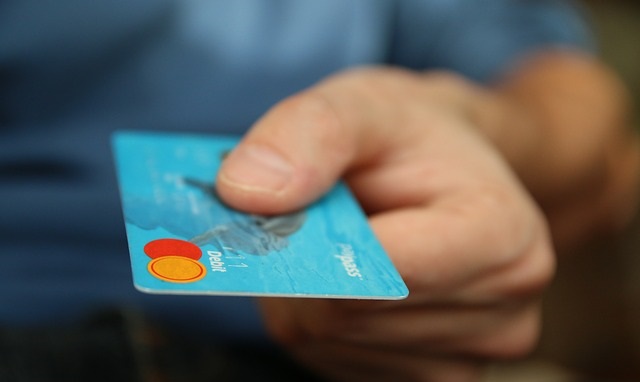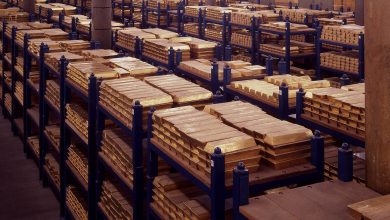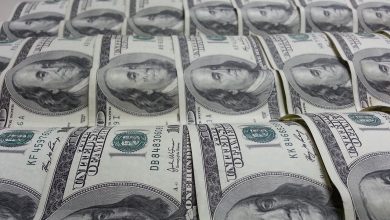High Interest Rates Not Stopping Americans from Running Up More and More Debt

Despite the high interest environment intended to slow down borrowing, American consumers continue to run deeper and deeper into debt as they cope with sticky inflation.
Consumer credit spiked by another $20 billion in April, a 5.7% increase year on year, according to the latest data released by the Federal Reserve.
Americans now owe a record $4.86 trillion in total consumer debt.
The Federal Reserve consumer debt figures include credit card debt, student loans, and auto loans, but do not factor in mortgage debt. When you include mortgages, US households are buried under more than $16.9 trillion in debt. Household debt cracked $17 trillion for the first time ever in the first quarter of this year.
Yet another big jump in credit card spending drove overall consumer debt higher in March. Revolving credit — primarily reflecting credit card debt — increased by $13.5 billion, a massive 13.1% year-on-year increase.
To put the numbers into perspective, the annual increase in 2019, prior to the pandemic, was 3.6%. It’s pretty clear that Americans are heavily relying on credit cards to make ends meet.
Americans now owe a record $1.24 trillion in revolving credit alone.
Retail sales increased by a paltry 0.4% in April. This indicates that Americans aren’t spending much more, but they’re still being forced to put a lot of that spending on plastic.
The bigger problem is the double whammy of rising debt and rising interest rates. Average credit card interest rates eclipsed the previous record high of 17.87% months ago. The average annual percentage rate (APR) currently stands at 20.44%.
This probably explains why more and more people are struggling to pay those credit card bills. Consumers typically pay down credit card debt during the first quarter of the year. In Q1 2023, credit card debt was basically unchanged. The annual payoff never happened.
And a credit expert told MarketWatch that the problem wasn’t people running up big balances buying Christmas gifts or going on post-pandemic vacations.
It seems likely that part of the fourth-quarter run-up in balances went towards groceries and other everyday bills rather than holiday expenditures, and folks are having a harder time paying that back.”
Another industry analyst shared those concerns, saying that credit card debt is easy to get into and hard to get out of, especially with interest rates so high.
More people carrying balances at higher rates for longer periods of time is definitely a bad combination. We’re seeing more people financing day-to-day essentials on credit cards.”
NBC News revealed just the impact of rising interest rates on indebted consumers.
Bankrate data shows it would take 16 years for someone to pay off the current average credit card balance of $5,474 by making the minimum payments at 19.2%. At that point, they would have shelled out $7,365 in interest alone.”
Meanwhile, the growth of non-revolving credit has slowed somewhat in the last several months, although it ticked up slightly in April. This debt includes auto loans, student loans, and borrowing for other big-ticket items.
Revolving credit grew by just $9.5 billion in March, a 3.2% annual increase. This was up from the meager 1.7% increase in December, but it remains below the average growth of 5% in recent years.
The plunge in non-revolving credit indicates that consumers have cut back spending on big-ticket items. That could signal that the economy is slipping toward a recession.
Nevertheless, spiking interest rates are not slowing down credit card borrowing. That’s likely because people simply don’t have a choice.
Federal Reserve rate hikes theoretically slow down borrowing and cool demand. But while people can cut discretionary spending, the average person can’t just stop buying groceries or filling up their gas tanks. If prices are rising faster than incomes, people have to turn to credit cards, no matter how high the interest rates climb.
This is a big problem for the Fed as it tries to battle rising prices with interest rate hikes. The inflation that the central bank created is forcing people to go deeper into debt to cope with rising prices. Meanwhile, the inflation fight is making debt more and more expensive.
The bottom line is that Americans continue to borrow at an excessive rate because they don’t have any other way to make ends meet. People don’t run up their Visa balance month after month to buy groceries when they are in “very strong” financial shape. The stimulus checks are long gone. Savings are being depleted. The average person has no choice but to pull out the plastic. Of course, this is not a sustainable trajectory. A credit card has this inconvenient thing called a limit.
Call 1-888-GOLD-160 and speak with a Precious Metals Specialist today!
Buka akaun dagangan patuh syariah anda di Weltrade.
Source link







